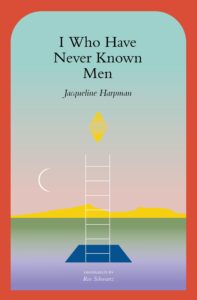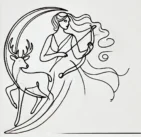I Who Have Never Known Men by jacqueline harpmen

Plot: ⭐️ ⭐️ ⭐️ ⭐️/5
Character Development: ⭐️ ⭐️ ⭐️ ⭐️/5
Flow: ⭐️ ⭐️ ⭐️/5
Theme: ⭐️ ⭐️ ⭐️ ⭐️/5
Writing Style: ⭐️ ⭐️ ⭐️/5
Emotional Resonance: ⭐️ ⭐️ ⭐️/5
I was given this book for Christmas by a friend and at first I just laughed because I saw the title and said “same”. Until I was 25, I’d never had a boyfriend and until I met this specific guy I’m with now, I’d never wanted one. It was always a joke between me and my friends that I would be alone forever, and for a long time I was just fine with that. Relationships always seemed like unnecessary stress and drama and eventual heartbreak. For a while, I was right. There was so much more for me to do and I knew, if I stepped back a bit, that myself and whatever guy I was talking to were not going to make it in the long term, so I would rather spend my time and energy in other places. When I met my guy, I learned that a real partner brings excitement and newness to your life, like any good friend would do.
Needless to say, I was skeptical of men and what value they could bring to my life for a lengthened period of time, so this book seemed right up my alley. I had never heard of it before, but I later found out that it’s within the canon of classic feminist literature, which made this all the more exciting to read.
The author, Jacqueline Harpmen, was born in Belgium, fled to Morocco with her family during World War II, and wrote her books in French. I Who Have Never Known Men is a science fiction work published in 1995 and was originally titled Mistress of Silence. It’s a short book — I read the whole thing one morning in a cafe — but there were no chapters, no breaks at all. At times this made it all flow together nicely and at others, it made it all feel a bit monotonous. Harpmen’s writing is extremely detailed and she is meticulous about completing any explanation, following each detail to its natural conclusion. This showed how dedicated she was to the project and what she was trying to do. I believe the intention of this story was to articulate the importance of culture and community, the stubborn endurance of human desire to hope, and the anguish of loneliness.
The story begins with 39 women and one young girl trapped in a cage like a large zoo enclosure, though the only visitors are the three guards who walk in sync, never acknowledging the prisoners or each other. The only time they are even perceived by the guards is when they are being given good, without any words exchanged or emotions shown, or when they break a rule and are cracked with the guards perfectly accurate whip.
The story is told from the young girl’s perspective. We later learn that she is likely 14 or 15 and has been in the cage probably half her life, with no memory of any life other than what they experience in the cage, even her own parents. The young girl, who is never given a name other than “child,” also never has a period or menstruation. The rest of the women remember that they had a life before the cage; they had children, husbands and lovers, jobs, and interests, but it is all a little fuzzy and they don’t know how they ended up in the cage either.
The child begins the story hating the older women because the women will not explain things to her that she doesn’t understand, that she’s never experienced; things like love and relationships, why they menstruate at all, or any stories of their lives before the cage were kept from the child because the women deemed it was useless to tell the child. She is instead told that she should feel lucky that she didn’t have to deal with pain and discomfort of menstruating; although, the child’s response begs the question of how can one feel grateful to not experience something they’ve never experienced? It’s only when our noses are completely clogged and our head is foggy with congestion that we swear to never take for granted breathing freely. The young child is constantly angry with the older women for being treated with such indifference.
She is constantly badgering them for information until one day, she notices that she finds one of the guards attractive. She recognizes that he may not actually be cute because she’s never seen anyone else, but this doesn’t stop her from fantasizing about a scandalous, clandestine encounter that excites her so much that she feels a router that spreads throughout her entire body (which we can only imagine is an orgasm). She never puts that word to it, nor does she ever really understand it, but for weeks after this she creates ever-evolving and ever more complicated fantasies in her head that give her that same explosive feeling. She spends hours everyday in silence, sitting completely still and staring at nothing with her imagination racing to create a story fast enough that she surprises herself.
The older women begin to feel the same frustration for the child that she once felt for the older women because she won’t tell them what she’s doing. The child realizes that it was never the secret itself that angered her but rather the feeling of not knowing what others know that made her hate the older women. From this, she realizes that the older women cannot hold any authority over her, they can’t even touch her. Once the child realizes they are all equal, her relationship to these older women changes.
One woman in particular becomes close to the child and they start to exchange ideas. The child explains that she has begun staring at the young guard she had once fantasized about because she’s trying to get him to slip up and acknowledge her.
“The first feminist gesture is to say: ‘OK, they’re looking at me. But I’m looking at them.’ The act of deciding to look, of deciding that the world is not defined by how people see me, but how I see them.” – Agnes Varda
This story is a fascinating analysis of what to make of a life when you have no idea why you’re here. It is well under 200 pages, which is both frustrating and powerful. It is not meant to have all of the answers. It is simply meant to make us consider all of the topics she brings up. In this way, it is an important piece of philosophy. I do not believe that Harpmen wanted to tell her readers what to think of the concepts she introduced; rather, in the same way that the child is forced to contemplate everything that is presented to her because she has no way of rationalizing whether it is important or not, we are to contemplate, consider, and make determinations. We are just as frustrated as the child because we too do not have all of the answers. This is true in Harpmen’s story, and it is also true in real life.
The satisfying thing about stories we take in, books and film alike, is that within a short period of time, we know the answer and we know how it ends. Sometimes we call it dissociating because it is a way to disengage with the real world, where we have no idea what will happen tomorrow, and engage in something that we don’t have a personal stake in. Yet through this act of understanding a story, just like the child in this book, we are better able to navigate the world we do live in.
The women in the cage have no purpose other than to survive. Everything of the world around them, all reason and understanding, is intentionally kept from them. All the things that make them human are kept from them other than the ability to communicate between each other; even this, however, is hindered in such a way that they must whisper and show no reaction or emotion. Yet, the most powerful thing that these women can do is tell each other their stories, their thoughts, and the way they see the world. It is the power of the community that keeps the women alive.
Feminism dissolves without community; Harpmen’s story is hyper-attentive to the ways in which community creates social consciousness, in which community leads to organized power. And when the child is the only one left, it is the memory of all those she loved in her past that makes her continue on in her search for answers. There is no feminist movement, there is no future for the fight of feminism without a strong understanding of the power and need for community. And thus, the enactment of it.

